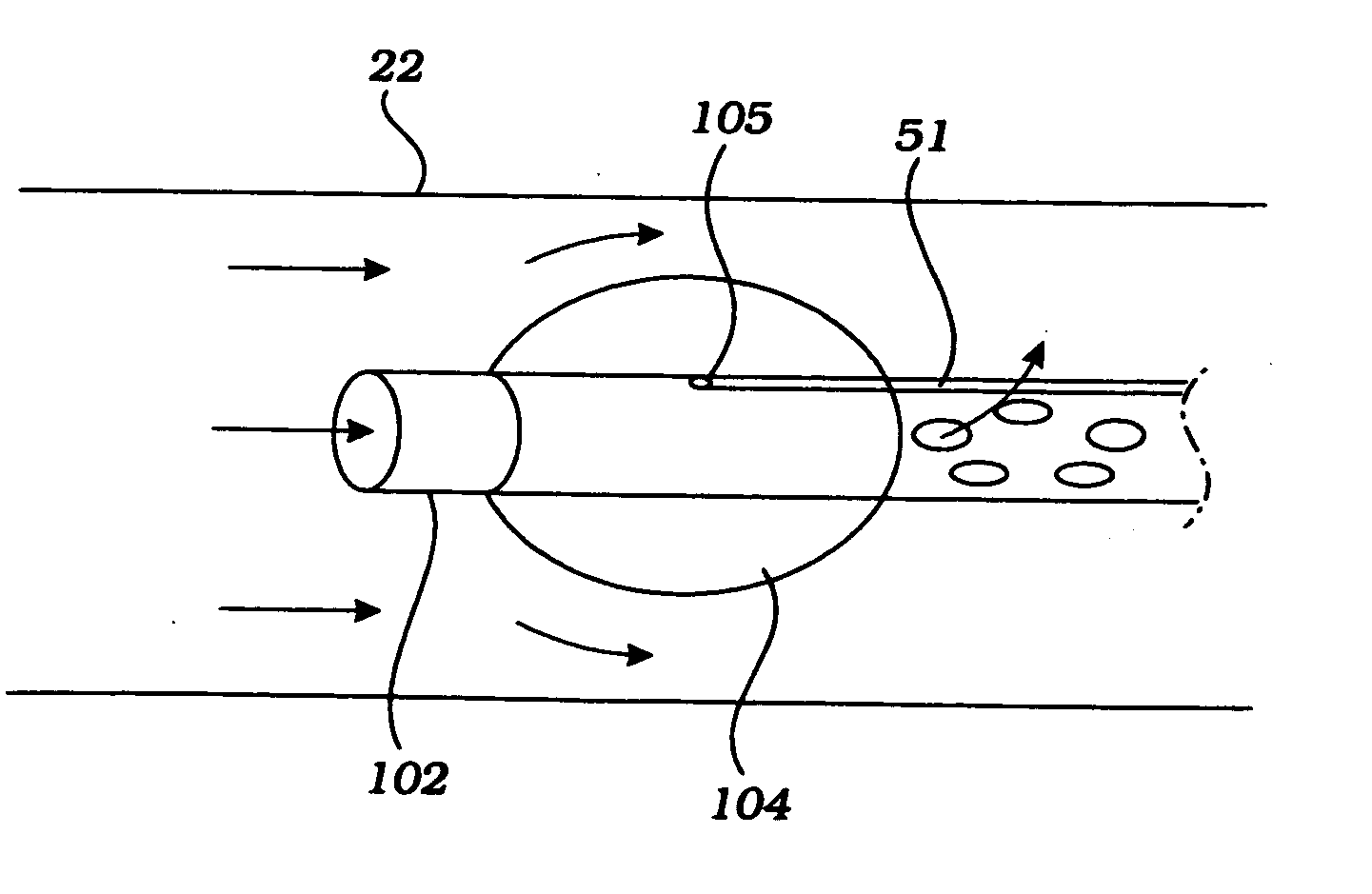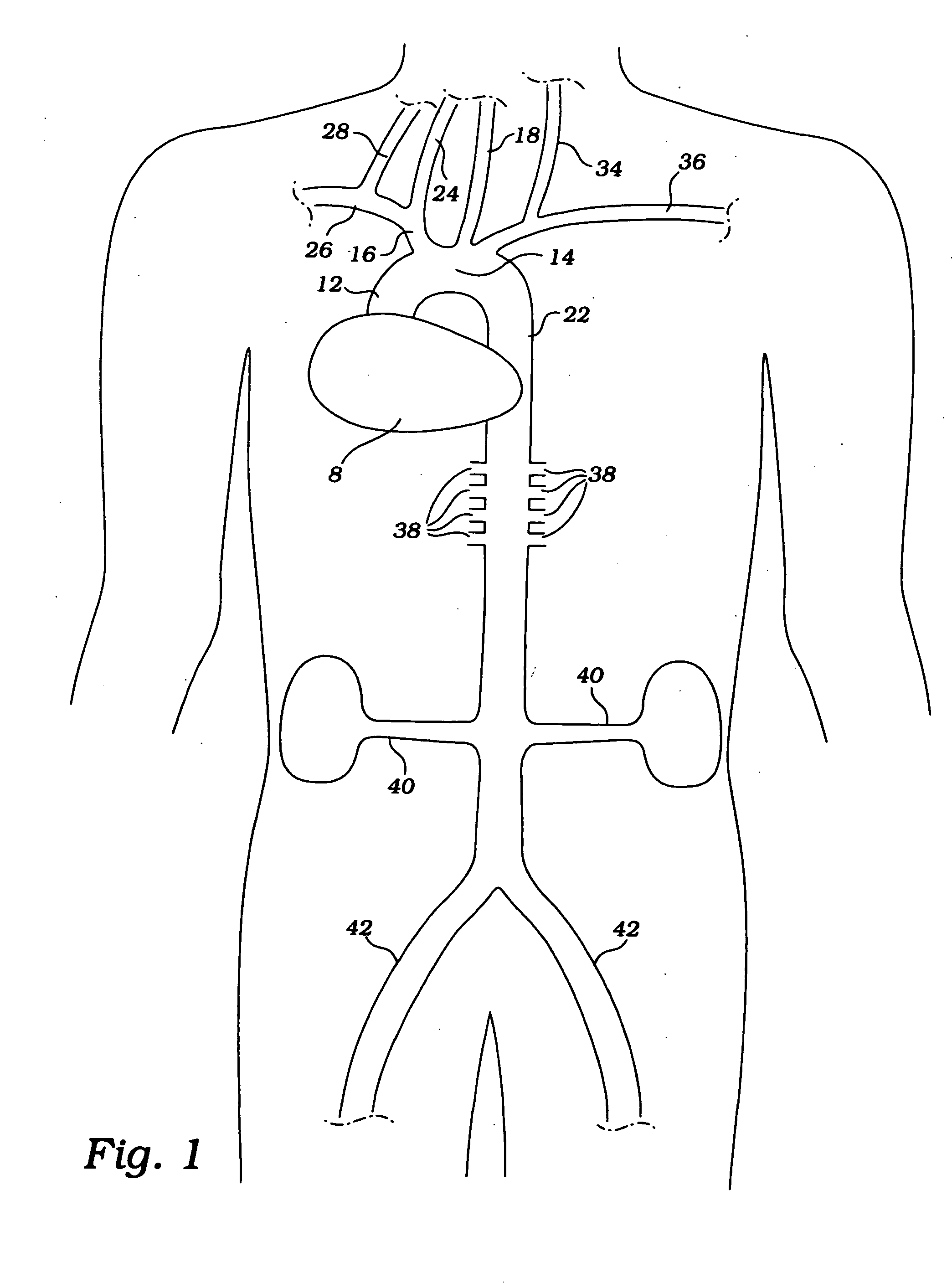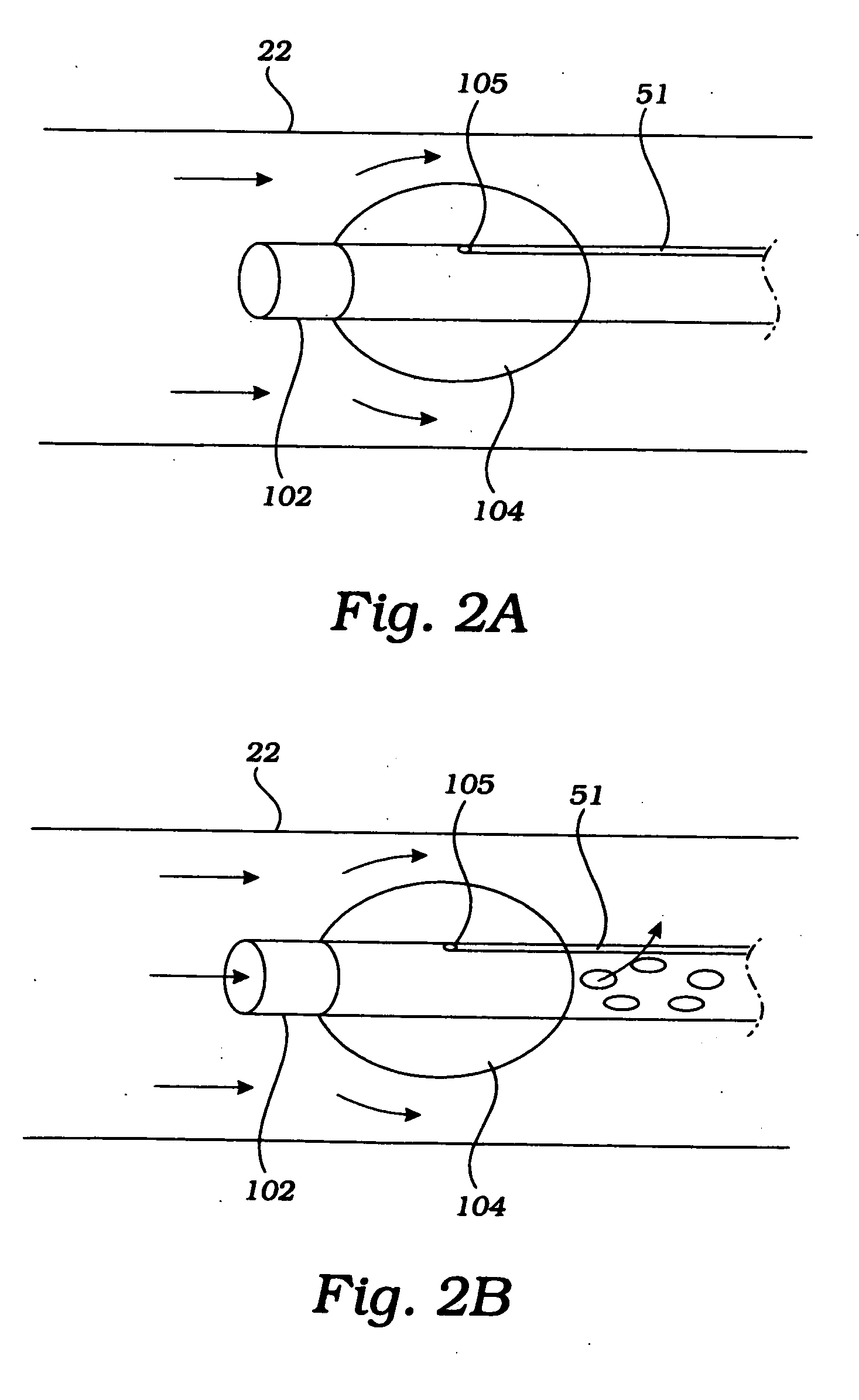Cerebral perfusion augmentation
a perfusion augmentation and cerebral ischemia technology, applied in the field of medical devices, can solve the problems of reduced blood flow, and reduced oxygen and nutrients in tissues, etc., to reduce embolism, reduce blood flow, and reduce embolism.
- Summary
- Abstract
- Description
- Claims
- Application Information
AI Technical Summary
Benefits of technology
Problems solved by technology
Method used
Image
Examples
example 1
[0194] In order to study the efficacy of the coarctation devices disclosed herein, an experiment was conducted using rats. The rat was placed under anesthesia, and an incision was made over one or more of the carotid arteries. The middle cerebral artery was ligated and the CCA was clamped using a hemostat to abolish blood flow to the ipsilateral cerebral hemisphere, thereby inducing a stroke. The aorta was then ligated, thereby causing immediate and sustained elevation in the systolic blood pressure (SBP), diastolic blood pressure (DBP), and mean arterial pressure (MAP) proximal to the constriction. It was found that the ligation tended to produce doubling of MAP.
[0195]FIG. 38 shows a plot of cerebral blood flow (cc blood / 100 grams brain tissue / min) versus time (minutes) in a rate stroke model. Cerebral blood flow (CBF) can be measured using Laser Doppler Flow (LDF) measurement. As shown in FIG. 38, IPSI refers to the cerebral hemisphere where the stroke was induced, CONTRA refers ...
example 2
[0204] Sections of rat brain were taken before and after deployment of the devices disclosed herein using fluorescent-labeled capillary perfusion techniques. After induction of three-vessel stroke, the rat was injected with a red dye, followed by deployment of a coarctation device, followed by injection of a fluorescent green dye that has affinity for patent capillary. The rat is then sacrificed and sections of the rat brain were taken and exposed microscopically under fluorescent light. FIG. 39 depicts a normal rat brain having numerous fluorescent staining capillaries.
[0205] In stroke induced rat model using the method described in Example 1, 10 rats were used in a control group and 10 rats in a treatment group. In the control group (stroke but no coarctation) a fluorescent green dye was injected prior to sacrificing the animal as described above. A dramatic reduction in the number of patent capillaries is evident in the stroke center as depicted in FIG. 40 and in the stroke penu...
example 3
Infarct Volume Reduction Using Coarctation Device
[0206] Using the TTC technique (technetium stain) to determine infarct (stroke) volume, one hour of treatment with a coarctation device inflated at the level of the kidneys, and started 90 minutes after the onset of stroke (induced by CCA and MCA occlusion plus occlusion of contralateral carotid artery plus occlude CCA on good side for one hour), reduced stroke volume at 24 hours from 1100 to 400. Thus, one hour of treatment achieved a 66% reduction in stroke volume. In certain animals, up to 80% reduction in stroke volume was achieved, and the stroke was not visible at low magnification. Thus, the devices and methods disclosed herein provide for a reduction in stroke volume of at least 60%, more preferably at least 70%, more preferably at least 80%, and most preferably greater than 80%.
PUM
 Login to View More
Login to View More Abstract
Description
Claims
Application Information
 Login to View More
Login to View More - R&D
- Intellectual Property
- Life Sciences
- Materials
- Tech Scout
- Unparalleled Data Quality
- Higher Quality Content
- 60% Fewer Hallucinations
Browse by: Latest US Patents, China's latest patents, Technical Efficacy Thesaurus, Application Domain, Technology Topic, Popular Technical Reports.
© 2025 PatSnap. All rights reserved.Legal|Privacy policy|Modern Slavery Act Transparency Statement|Sitemap|About US| Contact US: help@patsnap.com



